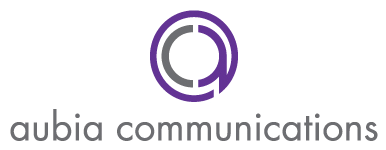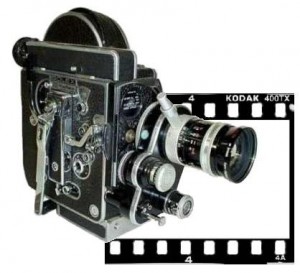 “Only one thing is impossible for God: To find any sense in any copyright law on the planet.”
“Only one thing is impossible for God: To find any sense in any copyright law on the planet.”
–Mark Twain
For companies working on the international scene, it is imperative they understand the similarities and differences in copyright laws between countries to effectively and legally conduct their business. Understanding American and Swiss copyright law is important for multinational companies operating in both countries.
American Copyright Law
Defined in the U.S., copyright is “an exclusive legal right used to protect intellectual creations from unauthorized use” (Trager, Russomanno & Dente Ross, 2012, p. 580). With roots in the U.S. Constitution, copyright law was created to encourage people to produce creative works and balance “the creator’s right to restrict the use of his or her work against society’s belief that some uses should be allowed without the creator’s permission” (Trager, et al., 2012, p. 580).7
Today, the Copyright Act of 1976 dictates the current application of copyright law in the U.S., protecting eight categories of work:
1) Literary
2) Musical
3) Dramatic
4) Pantomimes and choreographic
5) Pictorial, graphic and sculptural
6) Motion pictures and other audiovisual
7) Sound recording
8) Architectural.
The Act states that these works are protected when they are “’original works of authorship’ that are ‘fixed in any tangible medium of expression’” (Trager, et al., 2012, p. 584).
The copyright gives the creator of the work or the copyright owner six exclusive rights to these works. These are the rights to:
1) Reproduce the work
2) Make derivative works
3) Distribute the work publicly
4) Publicly perform the work
5) Publicly display the work
6) Transmit a sound recording through digital audio means (Trager, et al. 2012)
These works and their subsequent rights are protected for the life of the creator plus 50 years under the 1976 Act. The Sonny Bono Copyright Term Extension Act of 1998 extended the protection another 20 years, bringing the full protection now to the life of the creator plus 70 years.
Though “an original work fixed in a tangible medium has copyright protection from the moment it is created” (Trager, et al., 2012, p. 597), if the creator wants to bring suit for infringement, he must register the copyright with the U.S. Copyright Office in Washington, D.C. He can do this by submitting two copies of a published work or one copy of an unpublished work along with the correct forms and fees to the Office, where he will receive a Certificate of Registration anywhere between four to six months later.
Once registration has taken place, a creator or copyright owner can bring suit if he believes his original work has been used without authorization. To do so, he must provide valid copyright protection, showing the work was an original created by him and fixed in a tangible medium, and the Certificate of Registration proving the copyright is registered with the U.S. Copyright Office. Finally, the creator or copyright owner must prove that either the offender directly copied the protected work or had access to the protected work and the work in question is substantially similar.
There is a fair use defense to copyright infringement. Courts use a four-part test to determine if a protected work has been used illegally in a case-by-case basis. First, the court will look at the purpose and character of the use. If the work was used for criticism, parody, comment, news reporting, teaching, scholarship or research, then the fair use doctrine would apply. Next, the court will determine the nature of the work. Typically, a court is apt to extend copyright protection to more creative works than factual works. Third, the court will examine the amount and substance of the portion used. Conviction of copyright infringement is more likely the larger the amount used and the more significant the part used was to the protected work. Finally, the court will determine the effect on the plaintiff’s potential profits. Viewed by many courts as the most important prong of the test, if the copyright violation adversely impacted the creator or copyright owner’s ability to sell the product then the court is most likely to rule in favor of the plaintiff.
In an effort to standardize American copyright law with international regulations, the U.S. joined the Berne Convention for Protection of Literary and Artistic Works in 1989, more than 100 years after the treaty’s inception in 1866. The treaty is the primary international agreement protecting creative works across borders, and Switzerland was one of the original partner countries of the convention. Though the Berne Convention has helped to regulate international copyright laws, there are differences in Swiss and American copyright protection.
Swiss Copyright Law
Copyright protection in Switzerland originates in the Swiss Confederation Federal Constitution. Defined by the Swiss Federal Institute of Intellectual Property, copyright is the exclusive protection of “intellectual creations … which have a unique character.” Unlike the U.S., the law was founded more to protect economic resources of individuals than to encourage creativity.
Current copyright law in Switzerland is decreed by the Swiss Federal Copyright Act of 1992. The Act extends protection to basically the same eight categories of work the U.S. copyright law protects:
1) Literary, scientific and other linguistic
2) Musical and other acoustic
3) Art, in particular paintings, sculptures and graphic
4) Scientific or technical content such as drawings, plans, maps or three-dimensional representations
5) Architecture
6) Applied art
7) Photographic, cinematographic and other visual or audiovisual
8) Choreographic and mime.
 With the addition of computer programs in the revised Act of 1992, the Swiss copyright law brought the total of protected works categories to nine, one more than the U.S.
With the addition of computer programs in the revised Act of 1992, the Swiss copyright law brought the total of protected works categories to nine, one more than the U.S.
The Act states these works are protected when they are “intellectual creations with an individual character, irrespective of their value or purpose.” The Act goes on to explain the “work is protected by copyright as soon as it is created, irrespective of whether it has been fixed on a physical medium.” This is much different than U.S. copyright law that explicitly states the work must be fixed in a tangible medium to secure copyright protection.
The 1992 Act provides the creator or the copyright owner with again the same exclusive rights to the work the U.S. copyright law provides:
1) To produce copies
2) To distribute copies
3) To recite, perform or present
4) To broadcast
5) To retransmit
6) To make available and perceptible.
With the special category of computer programs the Swiss copyright includes, owners also have the exclusive right to rent. Creative works protected by copyright share the same length of protection in the U.S. and Switzerland – the creator’s life plus 70 years. Only in the specified category of computer programs and performances, also known as “neighboring rights”, does the copyright only last for 50 years after the death of the creator or performer.
Another significant difference in the two national laws comes in the form of registration for a copyright. Whereas in the U.S., a copyright is required to be registered before legal recourse can be taken for infringement, Switzerland has no such mandate. “It is not necessary to file for protection or to ‘deposit’ the work as there is no register. It is also not necessary to refer to the copyright in the work. Notations such as ‘copyright’, ‘all rights reserved’ or ‘©’ have no influence on protection in Switzerland,” according to SFIIP.
Any creator or copyright owner who believes his copyright has been violated can bring suit for infringement if he can demonstrate a legal interest under the Copyright Act of 1992. Unlike the U.S., in Switzerland a person need only to claim an infringement and not prove access to the material in question. “Swiss copyright recognises the so-called ‘presumption of authorship.’ As long as it cannot be proven otherwise, the author is presumed to be the one whose name, pseudonym or distinctive sign appears on the copies.” The cantonal courts have a much more active role in assisting with the burden of proof, requesting courts to order measures in securing evidence, establishing the origins of unlawful items, preserving the existing state of affairs, and enforcing claims for injunctive relief and remedy infringement.
Defenses to Swiss copyright infringement center on private use. There is an ongoing debate in the entertainment industry over the 1992 Act provisions that continue to allow the “unauthorized downloading of multimedia content and the provision of that content to family members or friends for personal use.” Other defenses are quite similar to the U.S. fair use doctrine, such as use for parody, news reporting and research.
Applying the law to the Aubia Communications Blog
In administering the Aubia Communications Blog, items such as photos are used to supplement blog posts and web content, currently through a U.S. Creative Commons license. A Creative Commons license allows the copyright holder to license the work in whatever way he chooses, usually in a manner making the work more accessible to others with an attribution requirement.
Switzerland also participates in Creative Commons licensing. Through a partnership with a nongovernmental organization, specific Creative Commons licenses, such as Attribution 3.0 Switzerland, have been developed for use in Swiss copyright law.
To further investigate the uses of Creative Commons licenses, the case of Gerlach vs. DVU in the German courts is of interest since German and Swiss copyright laws are similar. In Gerlach vs. DVU, the plaintiff sought an injunction of the use of his photograph of a German politician unlawfully used by a German political party in 2010. The photograph was published online by the plaintiff with a Creative Commons license that required attribution and notice of the license. Upon review, the District Court of Berlin ruled the defendant had violated the Creative Commons license by using the photo on a website without attribution or notice of the license. An injunction was thus granted, establishing for the first time the credibility of a Creative Commons license in the German system of law.
The differences between the U.S. and Swiss copyright law that most affect the Aubia Communications Blog are Switzerland’s lack of requirement that a creative work be fixed in a tangible medium and no government department that registers copyrights. Along with recognizing the Switzerland Creative Commons licenses and including this protection for any original content, the blog also has to reconcile these differences when using supplemental material. Without a work needing to be fixed in a physical state and no copyright registrar, this makes the risk of inadvertently using protected work substantially higher.
How do you follow copyright in the international scene?
Though Twain’s sentiments of confusion can be understood in international copyright laws, finding a clear meaning and distinction in how each nation applies the law can be done. With a review of the legal documents and court cases shaping each country’s individual law, multinational firms are well served to explore these similarities and differences.
In the Switzerland and United States review, three items are of distinct interest:
1) The requirement in U.S. law to have a creative work in a tangible medium to receive copyright protection in court whereas no such requirement exists in Swiss law;
2) There is no Swiss government institution that registers copyrights like the U.S. Copyright Office; and
3) The separate copyright protection category computer programs enjoy under Swiss law that is not found in U.S. law.
Quoted references can be found in the book “The Law of Journalism and Mass Communication” Third Edition, 2012, by Robert Trager, Joseph Russomanno and Susan Dente Ross.



